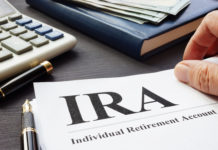Over the past few decades, the baby-boomer generation has been at the front of the transition from pension plans to personal contribution style retirement saving accounts. Among other benefits, each individual now enjoys greater control—and more options—in accumulating assets for retirement.
But with these opportunities comes an additional burden. People must take greater responsibility for financial decision-making by educating themselves as to the rules governing 401(k) plans and IRAs—or risk depletion of the funds they’ve worked hard to amass.
Luckily, the financial industry is becoming more specialized with retirement phase experts who can help to navigate this tricky course. But that doesn’t mean people planning for retirement always make the right decisions. Here are a couple of the biggest mistakes in managing your 401(k) or IRA—and some alternatives to protect your assets:
The mistake: Early withdrawal—If you take a withdrawal from an IRA account before age 59 ½, you are immediately subject to a 10 percent penalty on the funds taken—plus income tax. For example, a 55-year old in a 25 percent tax bracket would expect to pay $3,500 in penalties and taxes on a $10,000 IRA withdrawal.
The solution: Aside from the obvious “don’t touch that money until you’re 59 ½” there are circumstances under which you could take an early distribution and not be penalized. These include:
- Using funds to pay for your—or your child/grandchild’s—college education
- Buying your first home
- Certain medical expenses
Be advised, however, that these funds will still be taxed—just not subjected to the 10% penalty.
The mistake: Active account management—Managers may offer advice and promise sound investment decisions, but how can an investor trust that the manager is acting in their best interests? A recent U.S. News article reported that the Government Accountability Office (GAO) conducted recent studies of eight account managers. After giving each manager a profile of a hypothetical participant, the researchers found that all of the managers chose different options and balancing intervals—for the same participant!
“Some participants cannot be assured that they are receiving impartial managed account services or are able to rely on investment professionals taking on appropriate fiduciary responsibilities,” GAO reported.
Add in the management fee—which can approach a full 1% each year—and investors need to determine whether active management will help or hinder their long-term goals.
The solution: Numerous options exist for the educated investor that will allow you to manage your own 401(k) account. Perhaps the greatest value to such an approach is the avoidance of fees. On top of the 1% per year that account managers can charge, active managers tend to choose—surprise—actively managed mutual funds! These lead to higher expense ratios.
It would be one thing if active management led to high returns, but even Morningstar has admitted that low cost is the strongest indicator of mutual fund performance.
The best advice is to learn the ins and outs of 401(k) plans and IRAs. Retirement phase experts can offer the resources and materials to help you attain the knowledge you need. Spend a little time now, and you’ll save a lot of money later.
DISCLAIMER: Retirement Media Inc. does not sell or recommend financial products of any kind. The contents of this article are to be used purely for informational purposes. Consult a qualified professional.













